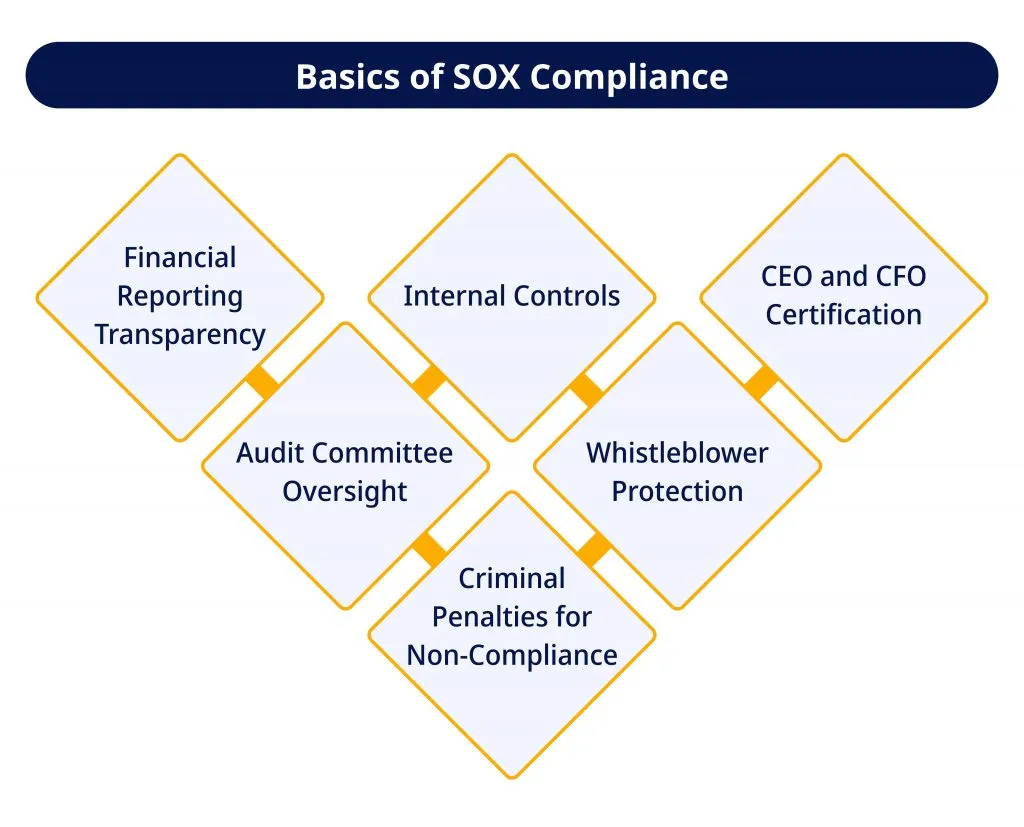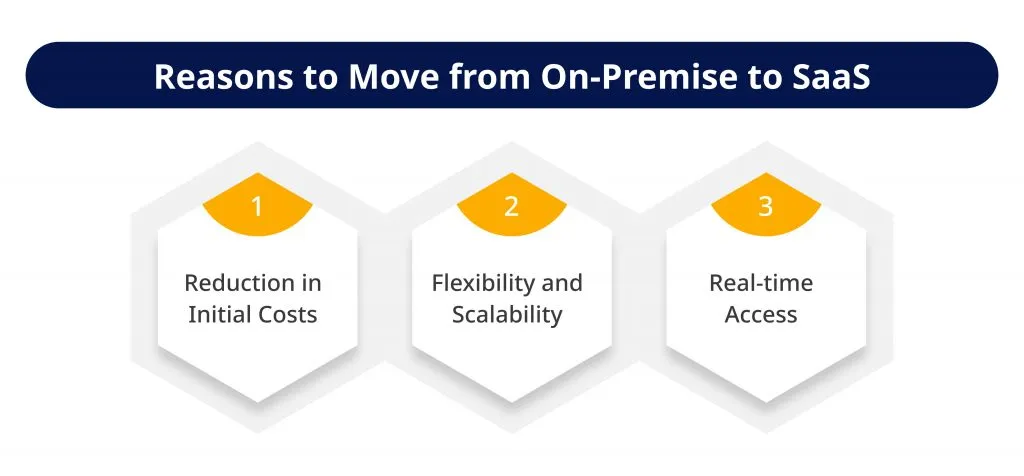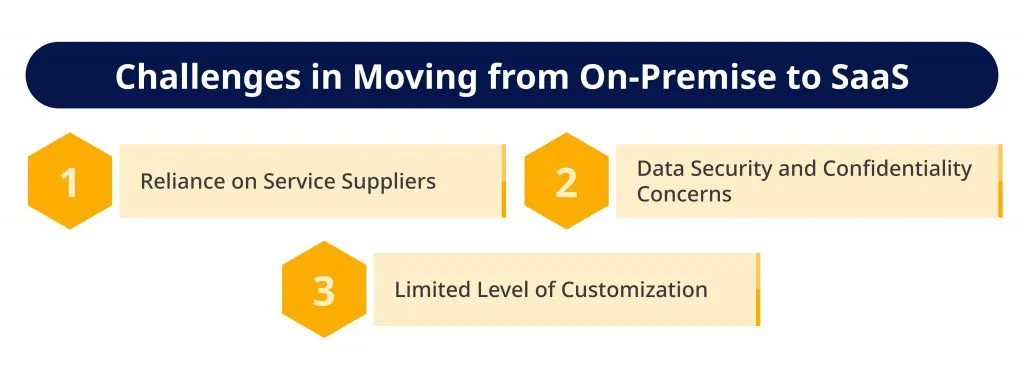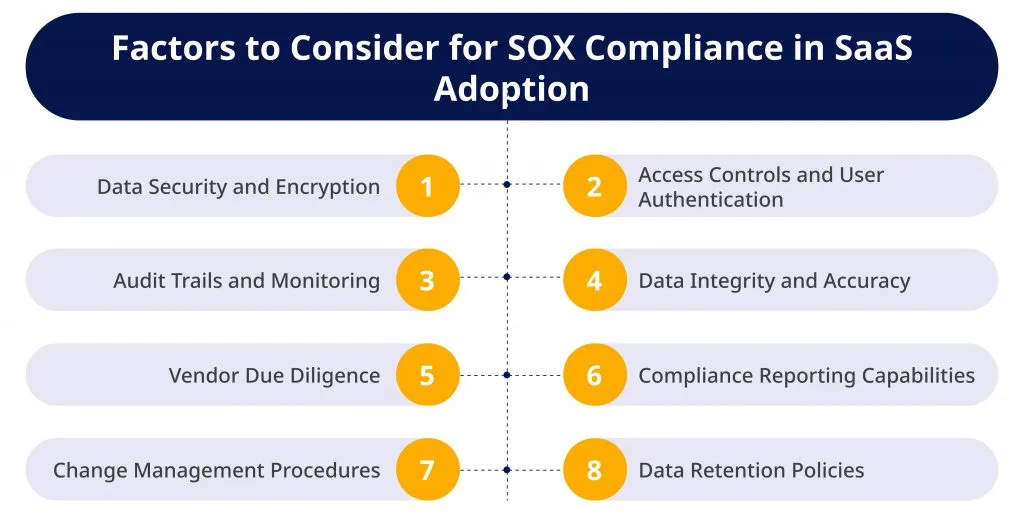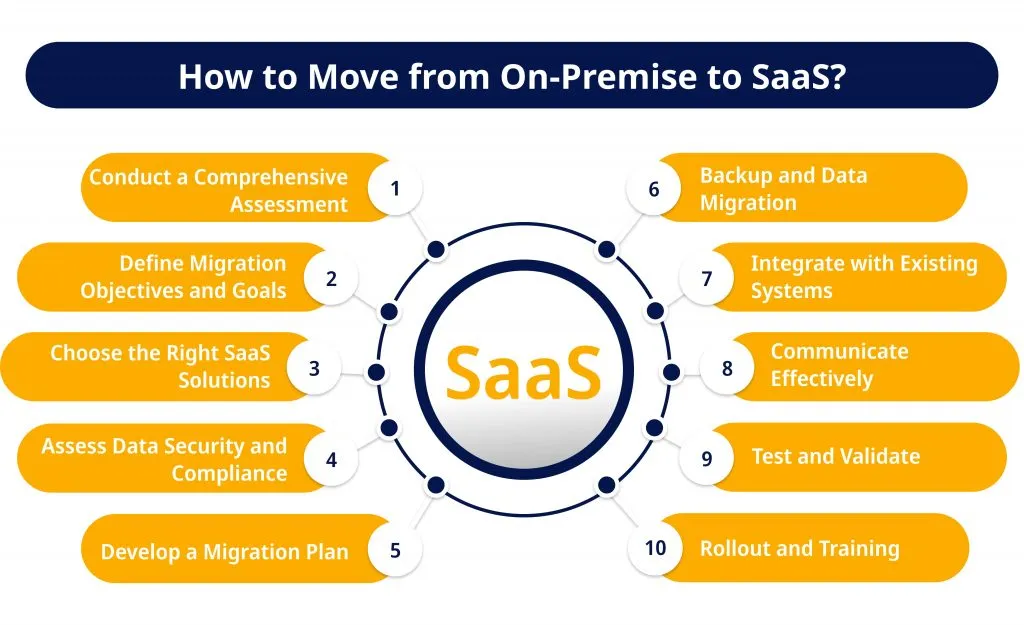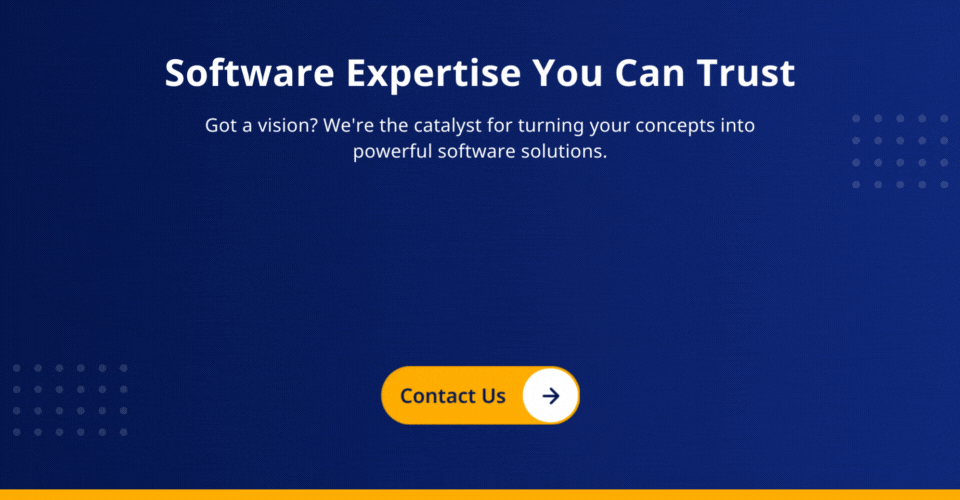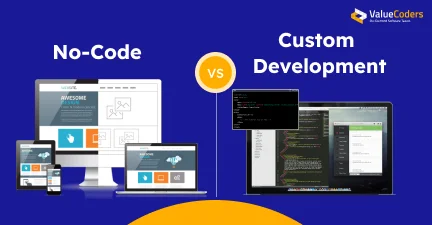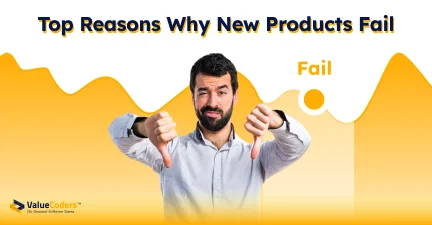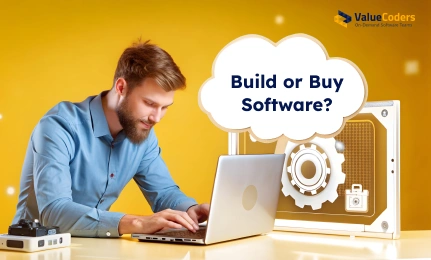Adopting change in the dynamic landscape of technology is not just a trend; it’s a necessity.
Businesses often contemplate transitions in pursuing innovation, such as moving from On-Premise solutions to Software as a Service (SaaS).
This shift becomes a strategic choice driven by evolving needs, addressing pain points like compatibility challenges and cost considerations.
If you’re navigating similar challenges and contemplating the move from On-Premise to SaaS for SOX compliance, our comprehensive guide is here to light the way.
Understanding SOX Compliance
The Sarbanes-Oxley Act, or SOX compliance, is a vital regulatory framework intended to improve financial reporting regarding accuracy, transparency, and accountability for US publicly traded corporations.
Enacted in 2002 as a reaction to corporate crises like Enron and WorldCom, SOX sets strict guidelines for internal controls and financial disclosures to safeguard shareholders and regain investor confidence.
Key Components of SOX Compliance:
- Financial Reporting Transparency: SOX mandates accurate and timely financial reporting. To give investors a clear and precise view of their financial health, companies must disclose major developments, risks, and transactions in their financial statements.
- Internal Controls: To comply with SOX, businesses, including those in startup product development, must set up and maintain efficient internal controls over financial reporting. This encompasses procedures and frameworks to ensure the accuracy of financial data, identify fraudulent activity, and prevent mistakes.
- CEO and CFO Certification: The correctness of financial accounts must be personally certified by top executives, usually the CEO and CFO. This personal accountability aims to improve executive responsibility and deter fraud.
- Audit Committee Oversight: To supervise the external audit trail, internal controls, and financial reporting procedures, public firms must set up an independent audit committee. This committee is essential to maintain financial integrity and compliance.
- Whistleblower Protection: SOX contains clauses that shield workers who disclose financial misbehavior or fraud within their companies. Protecting whistleblowers from reprisals promotes an open and accountable culture.
- Criminal Penalties for Non-Compliance: Executives engaged in fraudulent operations may face harsh penalties for violating SOX compliance, such as fines and imprisonment. The law makes people answerable for their contributions to financial mismanagement.
Unlock the potential of SaaS while ensuring SOX compliance with our tailored solutions.
Why Move from On-Premise to SaaS?
On-premise solutions may struggle to meet modern digital demands, limiting data access beyond your company’s premises. Opting for Software as a Service (SaaS) offers practical solutions, bringing multiple advantages to your business.
Let’s explore the benefits of moving to SaaS compliance management with insights from our SaaS Application-A Complete Guide.
1. Reduction in Initial Costs
Purchasing a license for on-premise software is expensive because you require certain hardware to use this option.
On the other hand, since SaaS software is cloud-based, there’s no need to buy new hardware. All you need to manage your data is an internet connection.
SaaS can result in cost reductions, in contrast to the significant maintenance and update costs connected with On-Premise systems. The only requirement is a monthly or annual subscription cost, which the supplier handles.
Also read: How to Build a SaaS Application-A Complete Guide
2. Flexibility and Scalability
SaaS compliance management is incredibly flexible to accommodate your company’s demands. It guarantees excellent functionality in terms of convenience and security.
You can customize resources with SaaS to fit your needs. You may take full advantage of the software’s capabilities over time by staying updated with regular updates that bring you cutting-edge features.
3. Real-time Access
SaaS consulting solutions give access to your company’s data from any computer, providing unmatched ease.
Regardless of location, internal and external teams can discuss and cooperate on various projects, and this technique promotes seamless communication among software users. Working together and producing results effectively is no longer hampered by distance.
Let us streamline your move to SaaS with our services for a seamless transition.
Challenges in Moving from On-Premise to SaaS
Software as a Service solution is a useful substitute for installed on-site software. However, there are several limitations to user uptake.
-
Reliance on Service Suppliers
When you use SaaS compliance management, cloud computing is used for your application administration, which is enabled by a particular provider that hosts these services.
It could make you reliant on their service quality and availability, negatively affecting your software’s functionality. It’s critical to consider the possible hazards, such as data loss, in case of a service provider failure or bankruptcy.
-
Data Security and Confidentiality Concerns
When you use SaaS consulting, a third-party supplier hosts and stores your data on the cloud. It puts your business in danger of data breaches since it forces it to rely on the service provider’s reliability, which might raise worries about data security and privacy.
Even if the SaaS model is convenient, evaluating the security controls to reduce privacy risks is crucial for data security.
Read more: Protecting Business in Digital Age with Cybersecurity
-
Limited Level of Customization
With the SaaS model, authorized data storage may be restricted depending on the provider used, and interaction with other current systems may present challenges, especially for user-centric SaaS products. Each supplier may have different standards for data backup and customization.
Key Considerations for SOX Compliance in SaaS Adoption
Adopting Software as a Service (SaaS) within a software product development company while ensuring compliance with the Sarbanes-Oxley Act (SOX), requires careful attention to specific considerations.
Here are key factors to keep in mind for successful SOX compliance in SaaS adoption:
1. Data Security and Encryption
When adopting SaaS for SOX compliance management, data security must come first. Put strong safeguards in place to protect critical accounting and financial data. This is part of using cutting-edge encryption techniques to safeguard data during storage and transit.
Encryption guarantees that the data is safe and unreadable even in the event of illegal access. Maintain compliance with SOX regulations and keep ahead of changing security threats and risk management by routinely evaluating and updating encryption techniques.
2. Access Controls and User Authentication
In a SaaS setting, limiting access to financial data is essential for SOX compliance. Put rigorous access restrictions in place to prevent unauthorized people from accessing sensitive data.
It involves setting and enforcing access levels according to duties and roles in the workplace. To improve user authentication procedures, add multi-factor authentication.
By forcing users to present several forms of identity before gaining access to sensitive financial data, MFA offers an extra layer of security. Organizations can enhance security posture and guarantee adherence to SOX standards by merging access controls and user authentication.
Connect with ValueCoders to guide you through On-Premise to SaaS migration.
3. Audit Trails and Monitoring
Establishing robust audit trails and monitoring mechanisms is essential when adopting SaaS management compliance. Audit trails clearly show who accessed what data and when by thoroughly recording user actions and system modifications.
SaaS solutions must provide extensive audit trail features, enabling businesses to monitor system events, user actions, and modifications to sensitive data.
To maintain accountability, identify unauthorized activity, and prove compliance during audits, it is helpful to monitor these audit trails regularly.
4. Data Integrity and Accuracy
When using SaaS, maintaining data accuracy and integrity is essential for complying with SOX regulations. Since financial and operational data are frequently handled by SaaS apps, the accuracy and integrity of the data are crucial.
Organizations must verify data integrity at every stage of the data lifecycle, from input to storage and retrieval. It involves setting up data validation tests, encrypting data in transit and at rest, and installing access controls to stop unwanted changes.
Regular data quality evaluations and reconciliation procedures are crucial to confirm the authenticity of financial data. It enhances the dependability of financial reporting and ensures compliance with SOX regulations.
5. Vendor Reputation
It is crucial to conduct extensive vendor due diligence before implementing SaaS management compliance. Make sure prospective SaaS providers follow the relevant security and compliance guidelines by evaluating them.
Examine the vendor’s track record, knowledge in managing sensitive data, and dedication to data security. Check if the vendor’s procedures comply with your company’s compliance standards and if they go through frequent security audits.
Gaining trust and reducing risks related to SaaS adoption requires a thorough understanding of the vendor’s security policies.
Must Read: Unlocking SaaS Excellence: Top 8 Benefits and Insights
6. Compliance Reporting Capabilities
Software outsourcing service providers must have strong compliance reporting features to satisfy SOX’s strict standards. Examine if the selected SaaS solution offers configurable, in-depth compliance reports.
Important topics such as audit trails, data integrity, and access controls should be included in these reports. The ability to provide thorough compliance reports makes it easier to prove during audits that SOX regulations are being followed.
Further, give preference to SaaS suppliers with sophisticated reporting capabilities that optimize compliance paperwork and reporting procedures, guaranteeing responsibility and transparency in your company’s financial operations.
7. Change Management Procedures
Change management is essential when implementing SaaS for SOX (Sarbanes-Oxley) compliance. Implementing efficient change management methods is possible by ensuring that updates, additions, or alterations to the SaaS environment are regulated and documented.
It covers any modifications to software configurations, access restrictions, and other components that might affect the security and integrity of financial data.
Organizations may assure compliance with SOX rules, demonstrate accountability, and maintain a clear audit trail by using strict change management practices.
8. Data Retention Policies
Adopting SaaS in a way that complies with SOX requires thorough data preservation rules. These guidelines specify how financial data must be kept, preserved, and disposed of.
Setting precise data retention periods depending on business demands and regulatory constraints is essential. SaaS customers can prevent unintentional data breaches and non-compliance issues by being aware of and following these policies.
In addition to ensuring compliance with SOX rules, putting strong data retention policies into place encourages effective data management and lowers the possibility of data misuse or illegal access.
Now that you know the key factors to consider when adopting SaaS for SOX Compliance, let’s further discuss the steps to take to move from on-premise to SaaS, particularly with the assistance of custom software development services.
Steps to Move from On-Premise to SaaS
Successfully moving from On-Premise to SaaS requires careful planning and execution. Here’s a guide to ensure a smooth transition:
Step 1. Conduct a Comprehensive Assessment
Make sure your current On-Premise infrastructure is well-assessed before starting the relocation process.
- List every program, piece of information, and service that will be used during the changeover.
- Evaluate the condition of your IT environment at the moment, considering dependencies, compatibility, and possible difficulties.
A thorough assessment helps reduce risks during the relocation process and lays the groundwork for well-informed decision-making, particularly within the software product development process.
Step 2. Define Migration Objectives and Goals
Clearly state the aims and purposes of your SaaS migration. Decide what you want to accomplish with this shift: better scalability, lower costs, cooperation, or other business outcomes.
Measurable objectives act as success standards and a migration process road map. Ensuring migration goals align with overarching business objectives guarantees the shift will enhance organizational development and productivity.
Step 3. Choose the Right SaaS Solutions
An essential part of the migration process is choosing the right SaaS solutions.
- Consider the aspects that make possible SaaS providers functional, scalable, secure, and compatible with your business requirements.
- Assess the standing and dependability of the vendor to guarantee a safe and seamless changeover.
The best SaaS solutions will complement your organization’s long-term aims and work with your specified migration objectives. A successful migration journey during this phase requires extensive research and due diligence.
Also read: Building User-Centric SaaS Products: Expert Tips For Success
Step 4. Assess Data Security and Compliance
It is crucial to thoroughly evaluate data security and compliance issues before switching from On-Premise to SaaS.
- Examine the security measures the selected SaaS provider provides and ensure they comply with applicable laws and industry norms.
- Verify that the SaaS system has strong access restrictions, encryption mechanisms, and sensitive data protection safeguards.
By reducing potential risks, this assessment assists in preserving compliance and protecting data integrity both before and after the move.
Step 5. Develop a Migration Plan
Creating a comprehensive migration plan is the first step to guaranteeing a seamless transition. All facets of the migration process, such as deadlines, assignments, and roles, should be covered in the plan.
Consider using a phased approach and gradually moving particular apps or data sets to reduce interruptions. A well-thought-out plan should also have backup plans in case of unanticipated problems and a communication plan to update stakeholders on developments during the transfer process.
Leverage our services for a smooth transition from On-Premise to SaaS with SOX compliance.
Step 6. Backup and Data Migration
It is essential to have strong backup protocols in place to guard against data loss when moving from On-Premise to SaaS.
- Ensure all essential data and systems are well-backed before starting the relocation.
- Move forward with the data migration to the SaaS platform after the backup is set up.
- Ensure the data is transferred with integrity and complies with the organization’s specifications.
Preventing potential data-related setbacks and ensuring business continuity need a well-managed backup and data migration process.
Step 7. Integrate with Existing Systems
A successful migration requires integrating the new Software as a Service (SaaS) solution with the current systems. It ensures that the SaaS application seamlessly connects and works with other platforms or technologies the company already uses.
Data consistency and process continuity are dependent on integration. Check for compatibility, set up procedures for synchronizing data, and set up the required APIs to facilitate easy information sharing.
The SaaS solution will become an essential component of the company’s ecosystem with a well-executed integration strategy, increasing overall operational efficiency.
Step 8. Communicate Effectively
Throughout the on-premises to cloud-based software conversion process, efficient communication is essential, especially when exploring new SaaS product ideas. Effective and prompt communication is crucial for controlling expectations and easing worries among many stakeholders, such as staff, supervisors, and end users.
- Give a clear explanation of the transition’s justifications, advantages, and expected effects on day-to-day operations.
- Give frequent updates on the migration status, the schedule, and any modifications users may encounter.
Providing tools and training sessions can help users become accustomed to the new SaaS environment. A more seamless transfer for all parties concerned is ensured by proactive communication, which increases self-assurance and promotes a positive outlook on the relocation.
Step 9. Test and Validate
Testing and validating the SaaS migration before the full-scale launch is crucial, especially in cloud application development. It includes verifying user accessibility, making sure apps run smoothly in the new environment, and evaluating the integrity of the moved data.
To find and fix problems before they affect the entire company, test various scenarios with varying user responsibilities. By validating the migration, you can reduce disruptions, guarantee a seamless transition, and preserve data consistency and correctness.
Step 10. Rollout and Training
Deploying the SaaS solution across the entire enterprise is the goal of the rollout phase. To reduce potential complications, start with a smaller subset of users or certain departments and work your way up gradually.
Simultaneously, hold thorough training sessions to acquaint end users with the new SaaS environment. The functionality, features, and workflow modifications should all be covered in training.
Ensuring a favorable response and successful adoption of the SaaS platform throughout the enterprise requires effective communication and training.
Must Read: 20+ SaaS Product Ideas To Empower Your Business
Final Words
Ultimately, businesses will go to SaaS software product development companies if their traditional on-premises strategy can no longer help them achieve their objectives.
Many businesses realize that SaaS migration is a more effective approach to achieving their objectives when capabilities, cost, and security are considered.
Once you have decided that a SaaS model is best for your company, your next step is choosing a cloud provider to meet your goals.
ValueCoders, a SaaS consulting and custom software development services provider, has a built-in industry best practices for supply chain management, finance, human resources, sales, and marketing, among other important business processes.
These apps assist businesses in increasing productivity, cutting expenses associated with IT, and producing better outcomes.
We upgrade our cloud application development, providing businesses access to new features and capabilities and the newest technology. Connect with us!



